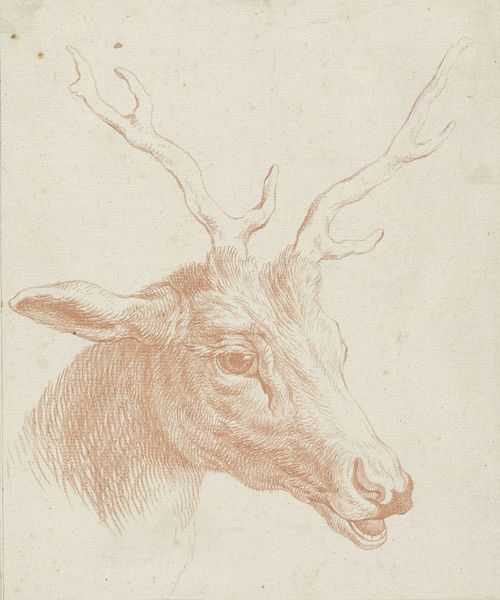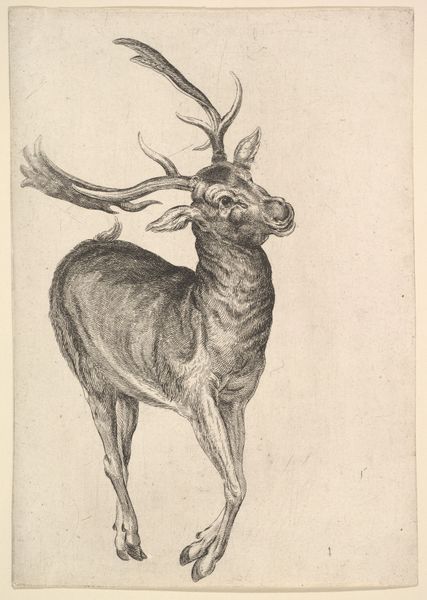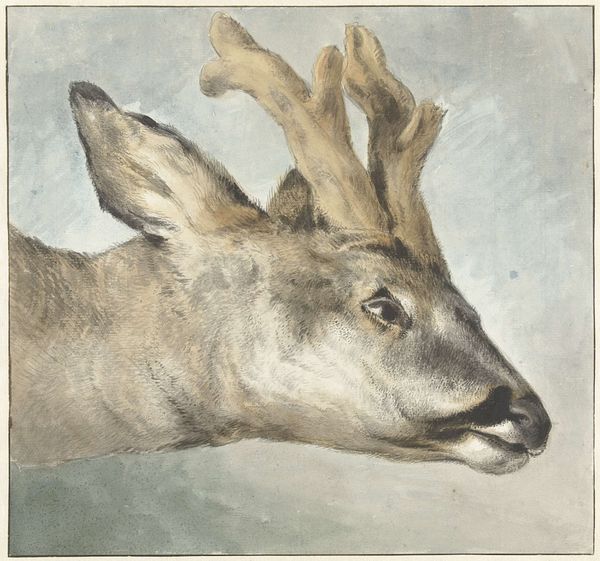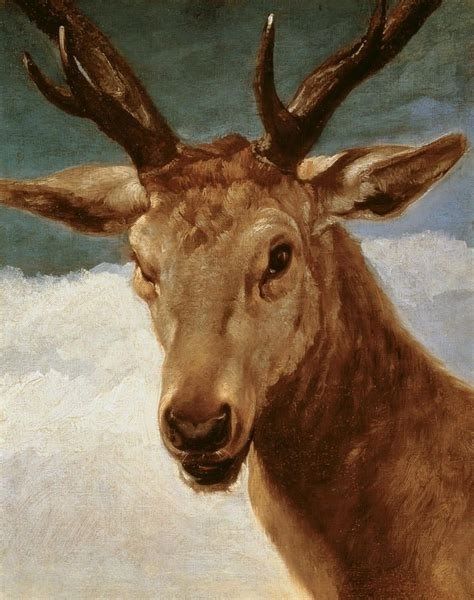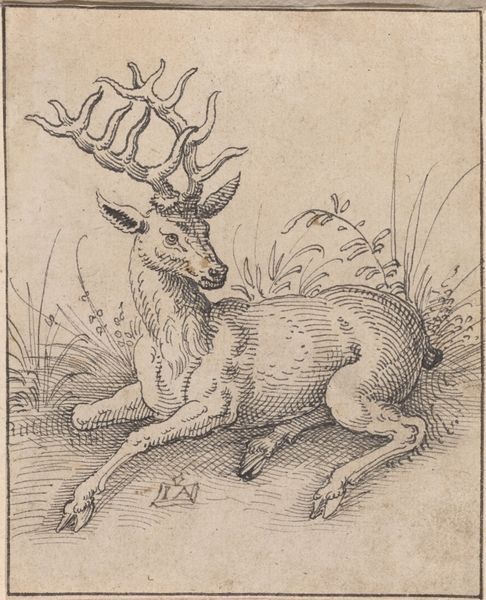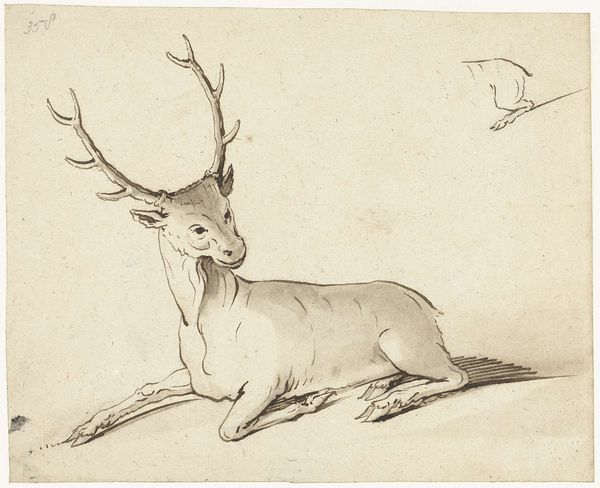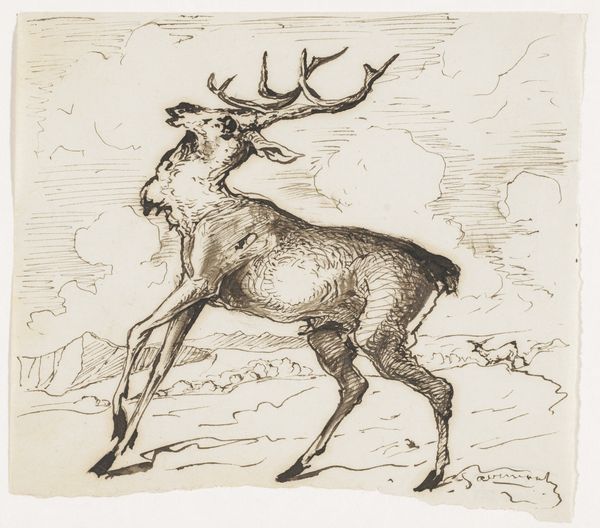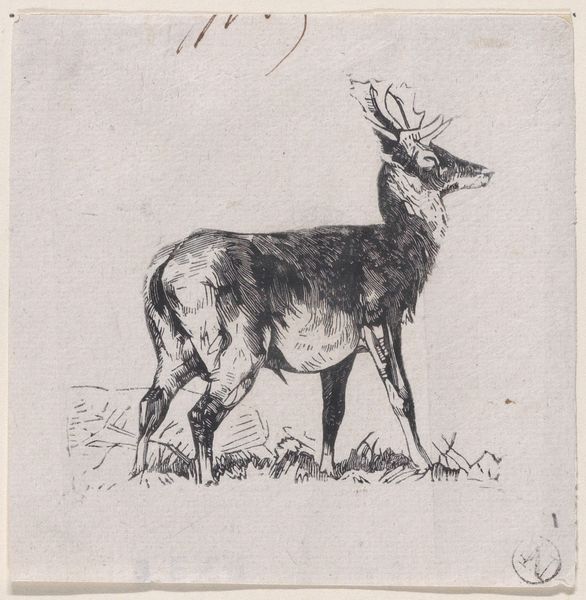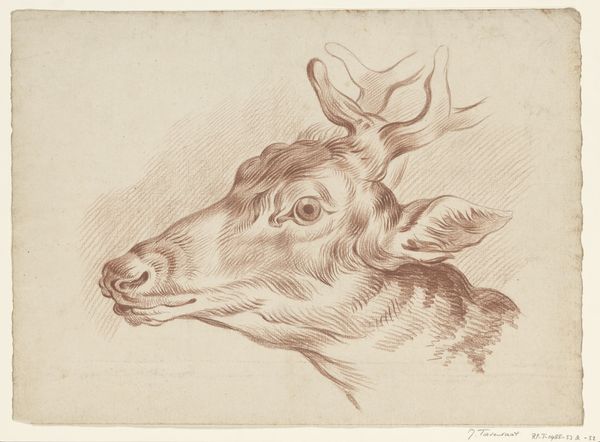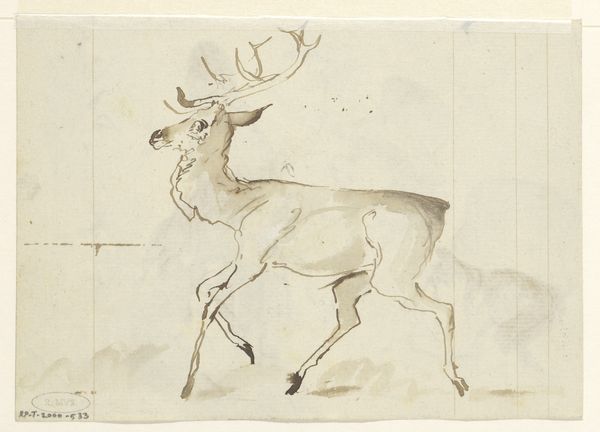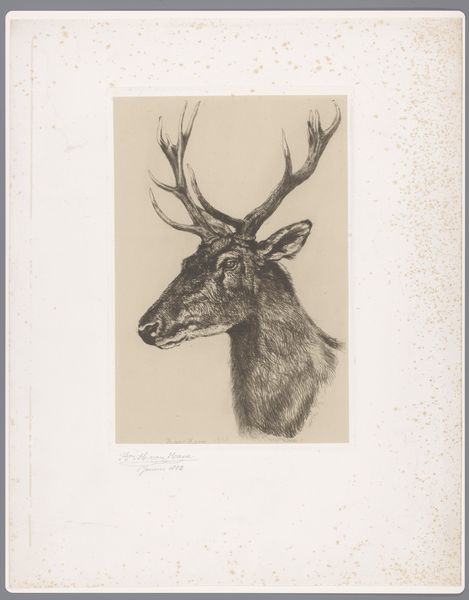
#
toned paper
#
egg art
#
animal
#
possibly oil pastel
#
oil painting
#
coffee painting
#
underpainting
#
animal drawing portrait
#
watercolour illustration
#
watercolor
#
warm toned green
Copyright: Public domain
Curator: Here we have Albrecht Durer’s “Head of a Stag,” rendered around 1503, and housed at the Musée Bonnat in Bayonne. Editor: What strikes me first is the almost unbearable detail; the layering of those minute strokes creates a sense of the animal's living presence. It's quite affecting. Curator: Yes, Durer had an incredible skill, almost obsessive in its dedication to realism, wouldn’t you say? The animal feels somehow... weighed down by its own image. One thinks of paper production, its accessibility – the raw labor condensed into an image. It is not just any material to simply hold and capture the essence of life but carries a complex history. Editor: It's heavy, indeed! And yet, so intimate, wouldn't you agree? It feels like a secret whispered, a shared moment between artist and… subject. Curator: Agreed, I read that it’s worked in watercolour, perhaps touched with oil, on this gorgeously toned paper which creates this lovely, subtle ground… He’s created such soft transitions on its muzzle and flanks. Considering paper’s prevalence at the time, there is a certain privilege granted through artistic consumption and distribution. Did people consider these layers? The costs? The environmental impact to view such intimacy? Editor: I suppose Durer gives us permission to project feelings, like nobility or perhaps the hint of wild melancholy in the deer’s gaze. He draws from an almost archetypal well. One does also wonder about the practical conditions under which Durer worked and lived – the apprenticeship systems, guild constraints. The materiality of making meets that melancholy, I find it beautiful, personally! Curator: A somber beauty! Ultimately, it seems this simple sketch holds both incredible presence, and offers an insight into not just artistry, but to social strata, the paper on which beauty has been drawn, and our own individual viewing! Editor: I completely concur; Durer pulls you in with that gaze, a powerful reminder of nature but he asks important questions, one to which requires the listener to become reflective, in more ways than they anticipated.
Comments
No comments
Be the first to comment and join the conversation on the ultimate creative platform.
